Abstract
Juveniles who live on the street are often the victims of physical and sexual abuse and family chaos. They have a multitude of health problems such as malnutrition, respiratory infections, sexually transmitted diseases, including human immunodeficiency virus, mental illness, and substance abuse. Health care, if available, is generally fragmented and often not relevant to their needs. Their high-risk existence leads to individual morbidity and has a negative effect on the health of the community. Presently, there is limited research on the health status and health care needs of street youth who are difficult to track and quantify. The findings of a project undertaken by Region IX of the Public Health Service in 1989 to provide technical assistance to three primary care clinics serving street youth in San Francisco are reviewed. Data were collected on demographics, overall health status, sex-related medical problems, mental health, and substance abuse and compared with another group of adolescents in the general population. Street youth were found to have a greater number of problems--both physical and psychological--than the general adolescent population. High-risk behaviors, such as drug abuse and failure to use condoms during sex, make this population especially vulnerable to sexually transmitted diseases, including human immunodeficiency virus. The potential impact on public health is enormous. Adequate access to health services needs to be addressed legislatively.
Full text
PDF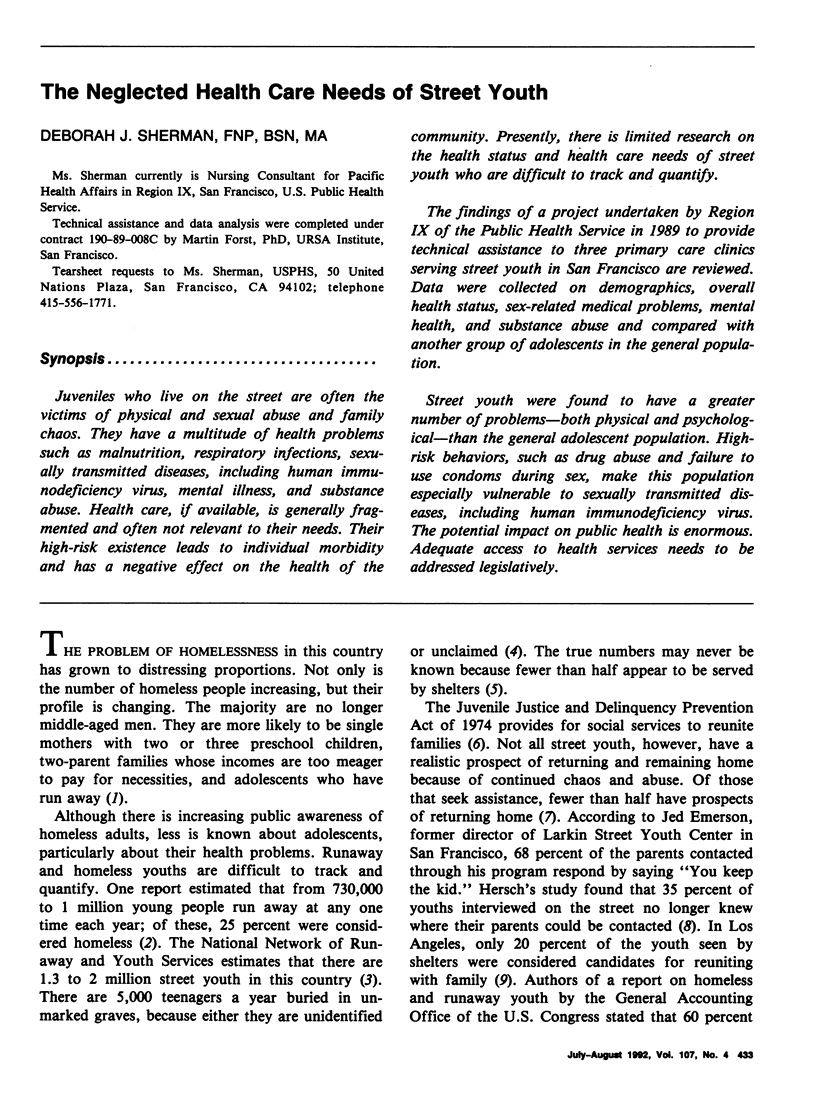
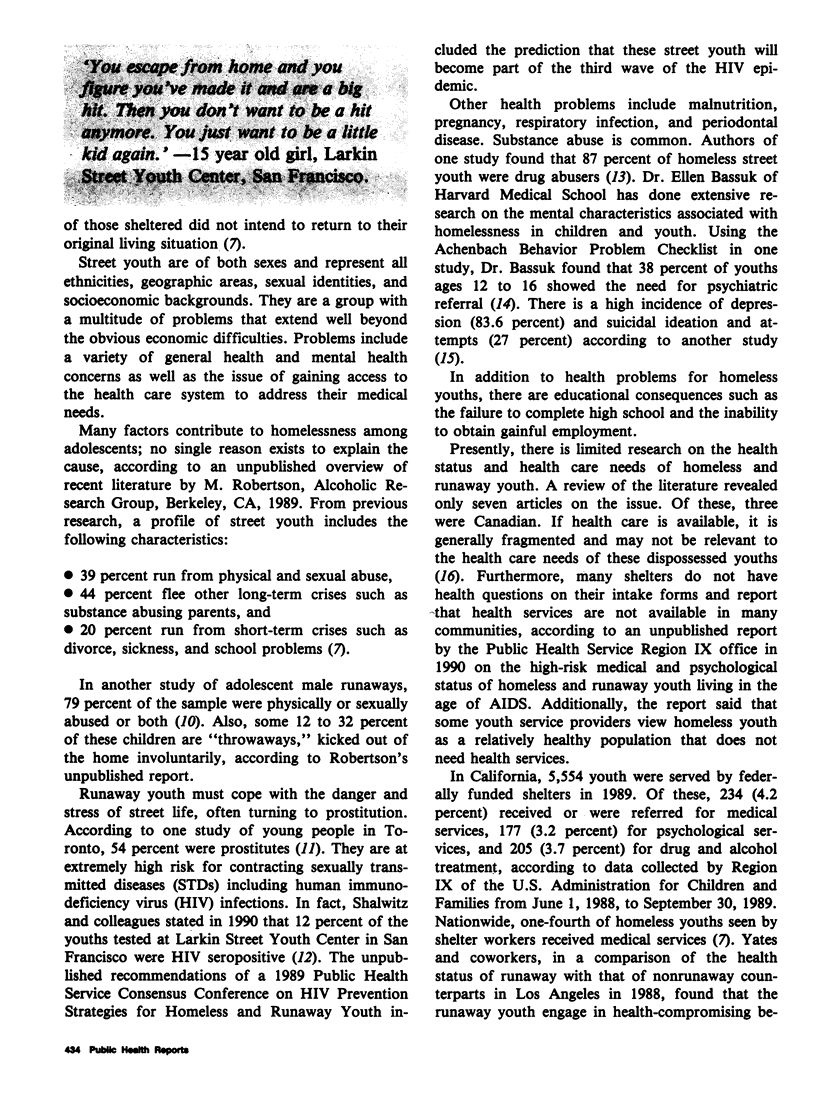
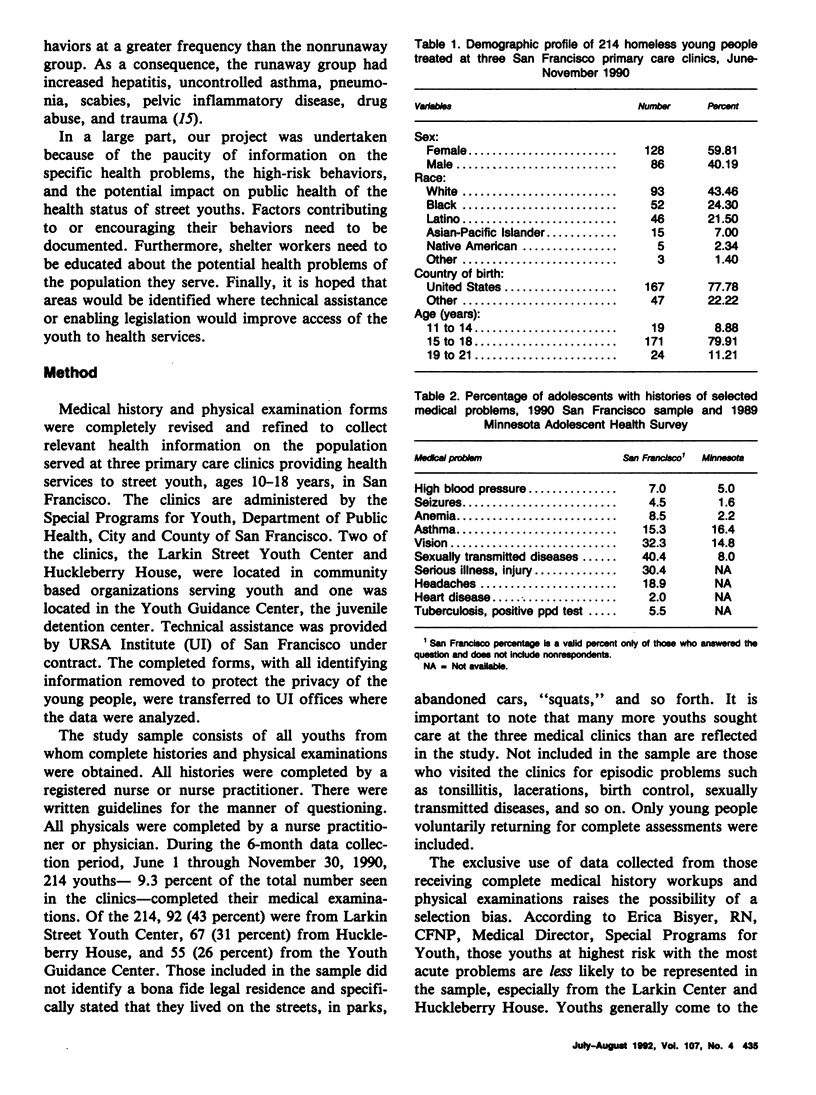
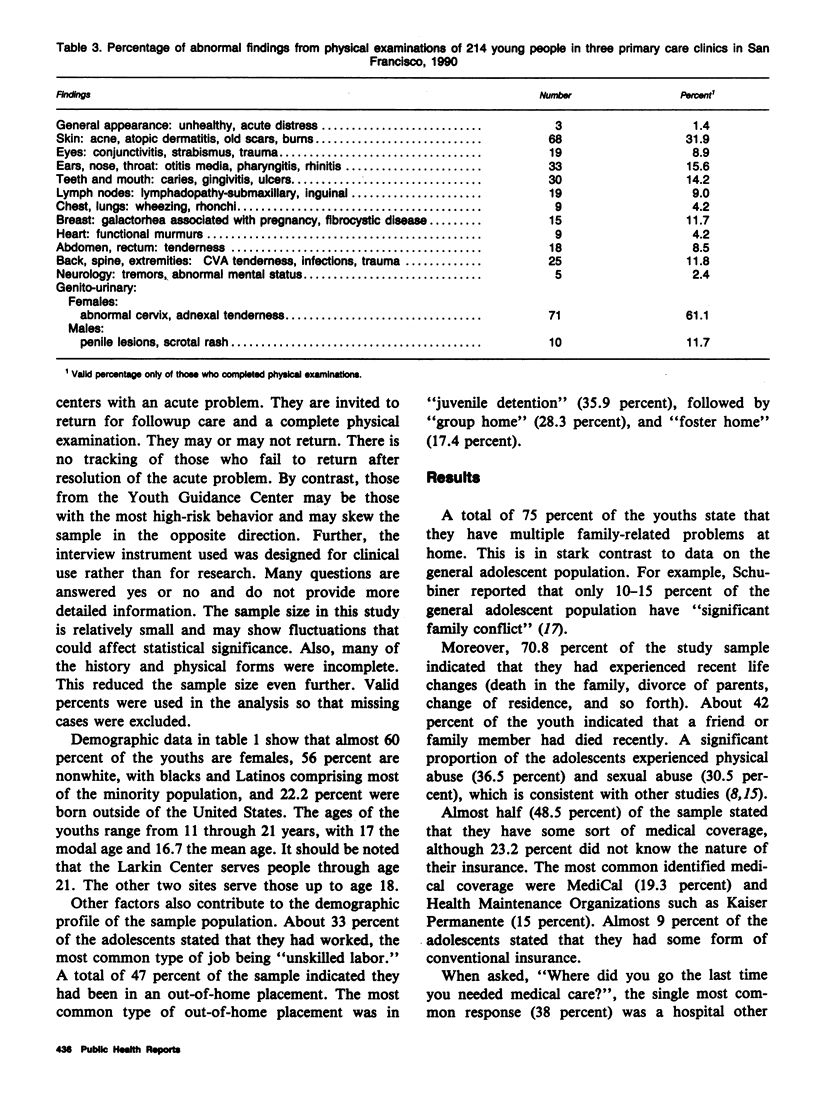
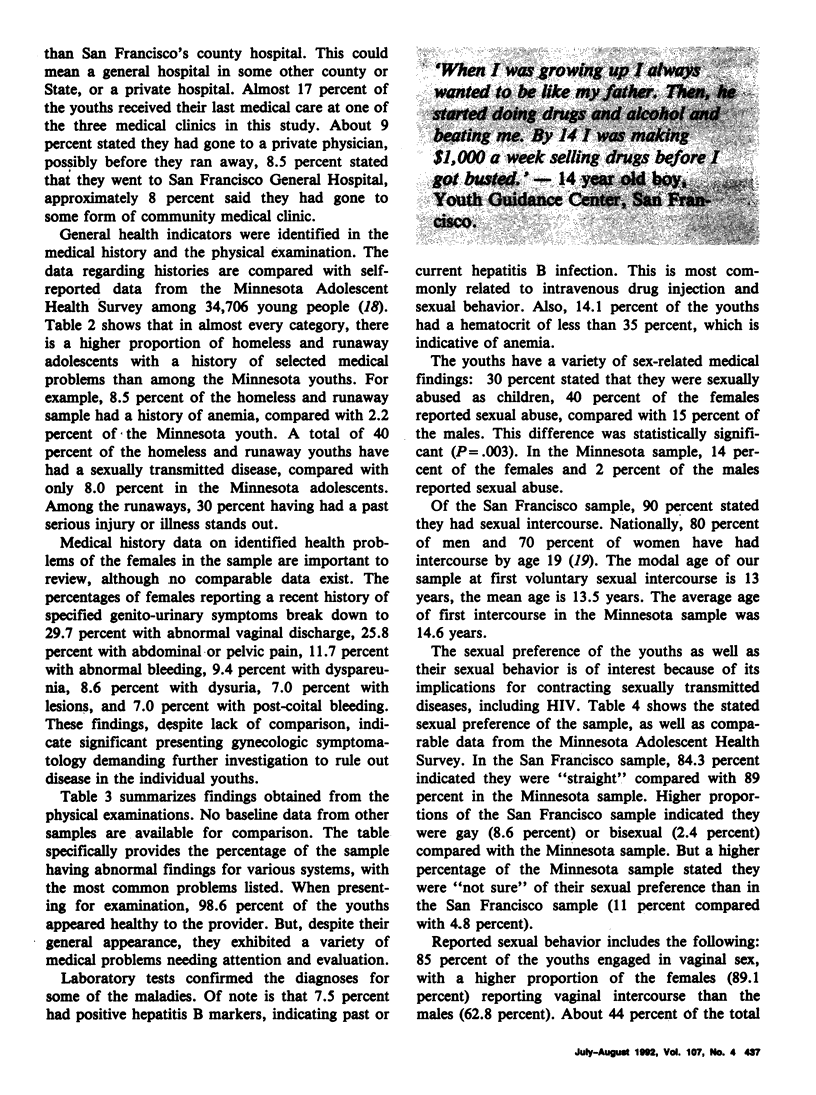
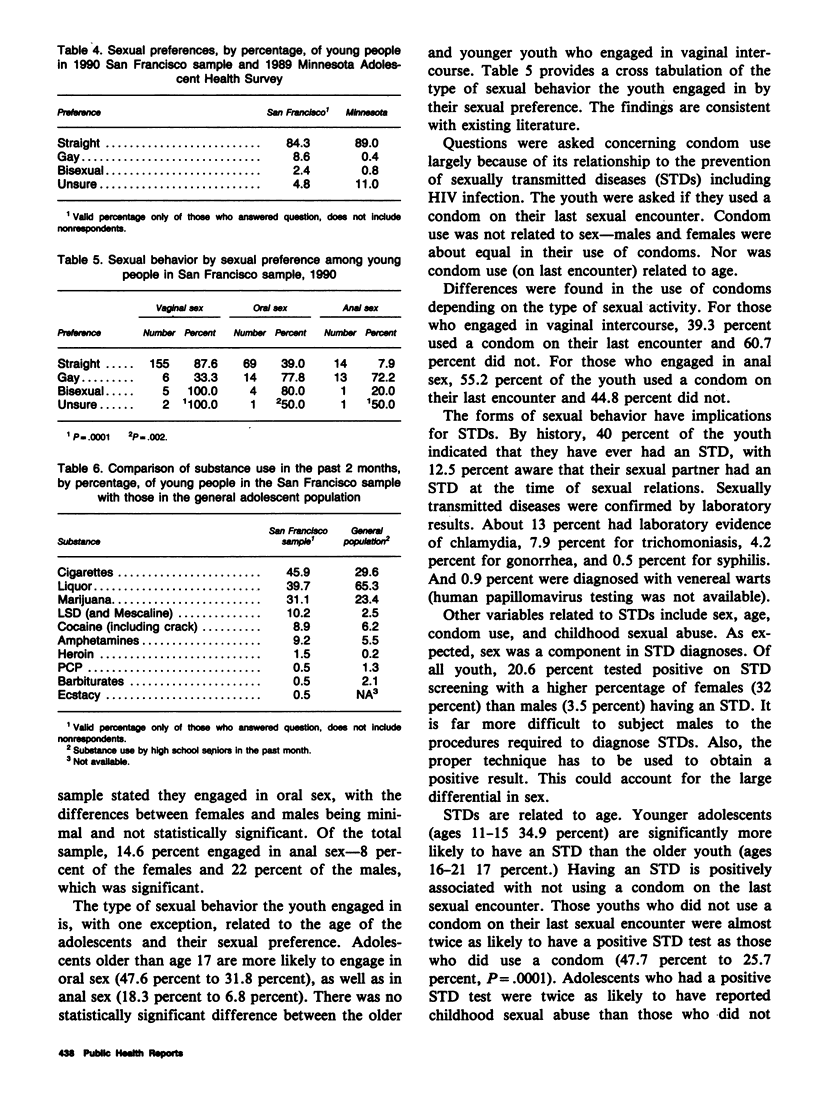
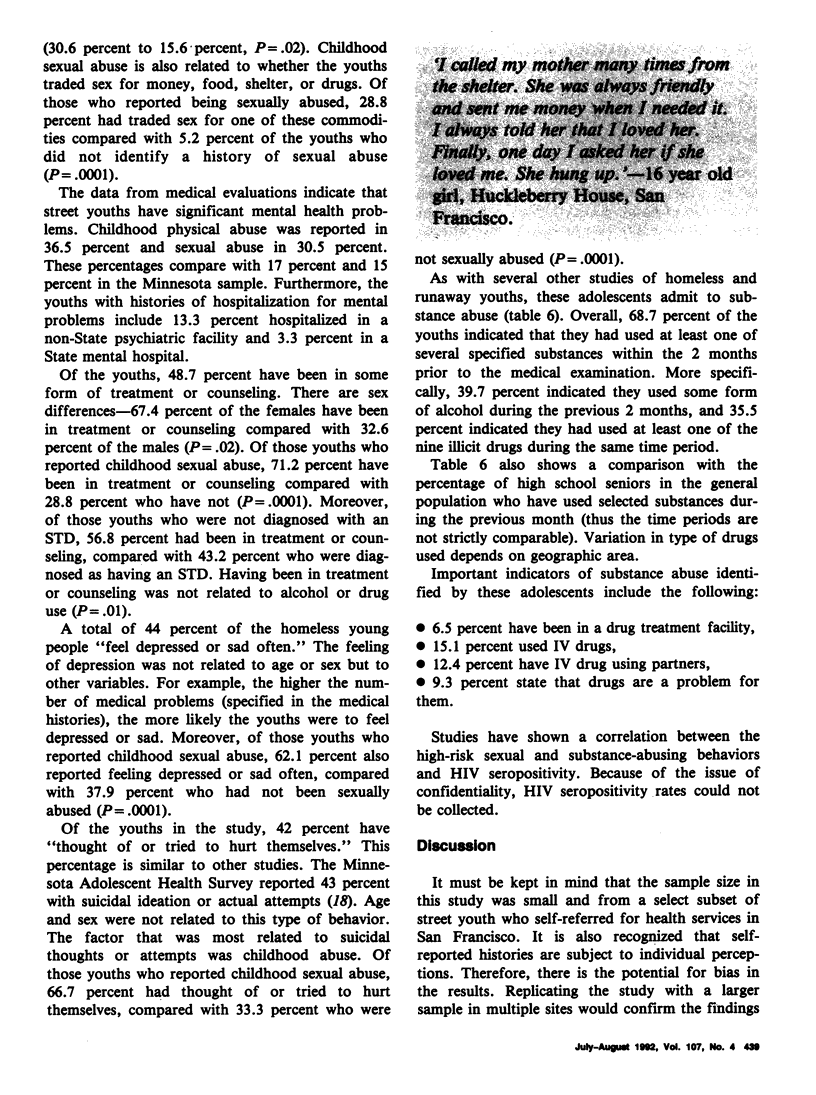
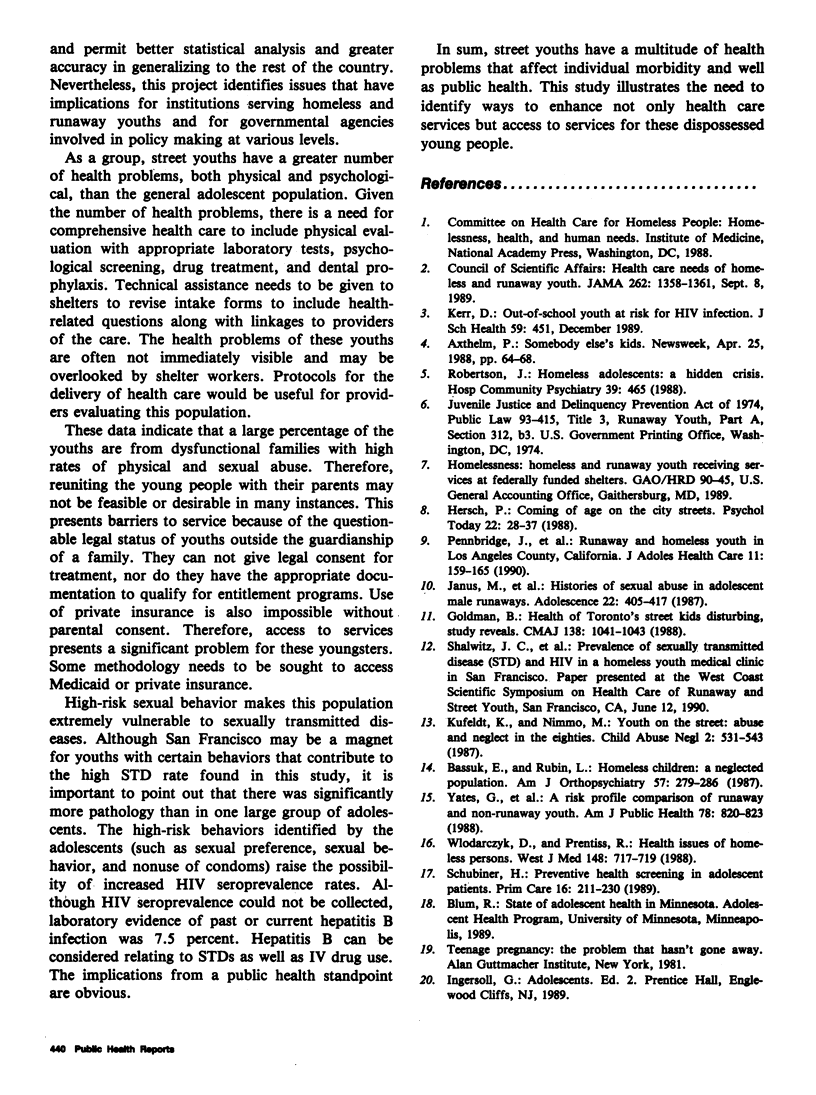
Selected References
These references are in PubMed. This may not be the complete list of references from this article.
- Bassuk E., Rubin L. Homeless children: a neglected population. Am J Orthopsychiatry. 1987 Apr;57(2):279–286. doi: 10.1111/j.1939-0025.1987.tb03538.x. [DOI] [PubMed] [Google Scholar]
- Goldman B. Health of Toronto's street kids disturbing, study reveals. CMAJ. 1988 Jun 1;138(11):1041–1043. [PMC free article] [PubMed] [Google Scholar]
- Janus M. D., Burgess A. W., McCormack A. Histories of sexual abuse in adolescent male runaways. Adolescence. 1987 Summer;22(86):405–417. [PubMed] [Google Scholar]
- Kerr D. L. Out-of-school youth at risk for HIV infection. J Sch Health. 1989 Dec;59(10):451–451. doi: 10.1111/j.1746-1561.1989.tb04666.x. [DOI] [PubMed] [Google Scholar]
- Kufeldt K., Nimmo M. Youth on the street: abuse and neglect in the eighties. Child Abuse Negl. 1987;11(4):531–543. doi: 10.1016/0145-2134(87)90079-2. [DOI] [PubMed] [Google Scholar]
- Pennbridge J. N., Yates G. L., David T. G., MacKenzie R. G. Runaway and homeless youth in Los Angeles County, California. J Adolesc Health Care. 1990 Mar;11(2):159–165. doi: 10.1016/0197-0070(90)90028-z. [DOI] [PubMed] [Google Scholar]
- Schubiner H. H. Preventive health screening in adolescent patients. Prim Care. 1989 Mar;16(1):211–230. [PubMed] [Google Scholar]
- Wlodarczyk D., Prentice R. Health issues of homeless persons. West J Med. 1988 Jun;148(6):717–719. [PMC free article] [PubMed] [Google Scholar]
- Yates G. L., MacKenzie R., Pennbridge J., Cohen E. A risk profile comparison of runaway and non-runaway youth. Am J Public Health. 1988 Jul;78(7):820–821. doi: 10.2105/ajph.78.7.820. [DOI] [PMC free article] [PubMed] [Google Scholar]


